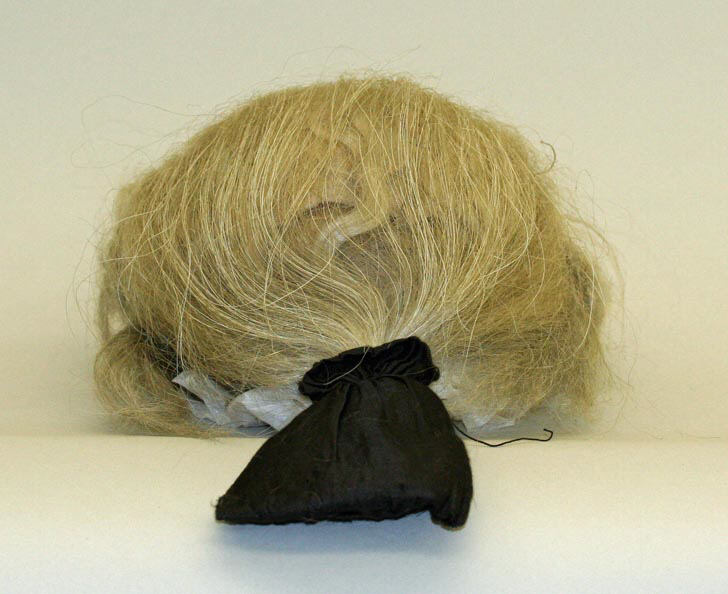Wig
Not on view
Fine wigs were made of human hair that was "neither too coarse, nor too slender, the bigness rendering it less susceptible of the artificial curl and disposing it rather to frizzle, and the smallness making its curl too short." Less expensive wigs, like this servant’s wig from Venice, were made of horsehair, goat’s hair or even feathers. Wigs were powdered with scented flour, which adhered to the hair by means of grease or pomatum. The process of powdering was very messy, so special "powder rooms" were designed. Wigs could also be sent to the local wig maker to be recurled and powdered. Gentlemen must have always had a sprinkling of flour on the shoulders of their garments, a flaw usually omitted in contemporary portraits.
Due to rights restrictions, this image cannot be enlarged, viewed at full screen, or downloaded.
This artwork is meant to be viewed from right to left. Scroll left to view more.



